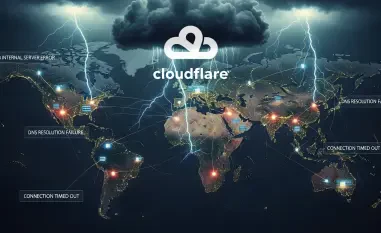Diving into the Shadows of Cyber Warfare
Imagine a world where foreign diplomats in a major global capital unknowingly surrender sensitive intelligence through their own internet connections, compromised at the very infrastructure level, revealing a chilling reality in Moscow. Here, a Russian state-sponsored hacking group, known by aliases such as Secret Blizzard, Krypton, and Turla, has escalated its cyberespionage game. Active for nearly two decades, this group, linked to Russia’s FSB, has deployed a sophisticated malware family called ApolloShadow, targeting embassies with alarming precision. This review delves into the technical prowess of ApolloShadow and the broader tactics employed, shedding light on a critical cybersecurity threat facing diplomatic entities today.
The significance of this campaign extends beyond isolated incidents, reflecting a broader trend of state-sponsored actors leveraging domestic systems for espionage. By exploiting local internet service providers (ISPs), Secret Blizzard demonstrates a chilling ability to manipulate trusted infrastructure, turning routine connectivity into a weapon. As the digital battlefield evolves, understanding the mechanisms behind such technologies becomes paramount for safeguarding international security and diplomatic integrity.
Technical Dissection of ApolloShadow and Attack Mechanisms
Adversary-in-the-Middle (AitM) Exploitation Tactics
At the heart of Secret Blizzard’s strategy lies a cunning use of adversary-in-the-middle (AitM) techniques, exploiting Russia’s domestic intercept framework, known as the System for Operative Investigative Activities (SORM). This system allows the group to position itself within local ISPs, intercepting and redirecting traffic from targeted devices. Victims are often led to what appears to be a legitimate captive portal—commonly used for network access authentication—only to be funneled toward an attacker-controlled domain displaying a deceptive certificate error.
This redirection is not merely a trick of navigation but a gateway to deeper compromise. Once users interact with the fraudulent portal, the stage is set for malware deployment, exploiting trust in familiar interfaces. Such ISP-level interference marks a significant leap in operational capability, enabling large-scale surveillance and data theft with minimal detection risk.
Capabilities of ApolloShadow Malware
ApolloShadow itself is a custom-built malware designed for stealth and persistence, showcasing an array of invasive features. One of its primary functions is the installation of a counterfeit Kaspersky root certificate, which grants attackers elevated privileges on compromised systems. If initial access lacks sufficient permissions, the malware employs tactics to bypass User Access Control (UAC), often by deceiving users into authorizing higher access levels through seemingly benign prompts.
Beyond privilege escalation, ApolloShadow manipulates network configurations to expose devices, enabling file sharing and making systems discoverable to attackers. It further entrenches itself by creating a persistent administrative account named ‘UpdatusUser’ with a hardcoded, non-expiring password, ensuring long-term control. These capabilities highlight a meticulous design aimed at sustained espionage, particularly against high-value targets like diplomatic personnel.
Strategic Targeting and Operational Evolution
Focus on Diplomatic Entities in Moscow
The deliberate targeting of foreign embassies in Moscow underscores a strategic intent to harvest sensitive diplomatic intelligence. By compromising devices used by embassy staff through local ISPs, Secret Blizzard positions itself to intercept communications, documents, and other critical data that could influence international relations. This focus reveals a calculated effort to exploit the unique vulnerabilities of foreign entities operating in a high-risk environment.
Such attacks pose profound risks, not only to the affected personnel but also to broader geopolitical stability. The potential exposure of confidential negotiations or strategic plans could strain diplomatic ties, making this campaign a stark reminder of the intersection between cybersecurity and global politics. Protecting these entities demands more than technical defenses—it requires an awareness of the hostile digital terrain they navigate.
Advancements in Tactical Sophistication
Over recent years, Secret Blizzard has shown a remarkable evolution in its approach, particularly in leveraging ISP-level access within Russian borders—a capability once considered unlikely. This development reflects a growing trend among state-sponsored actors to integrate domestic infrastructure into their espionage frameworks, blurring the lines between public utility and covert operation. The ability to operate at such a foundational level amplifies the scale and impact of their campaigns.
This shift also signals an increase in technical sophistication, as the group adapts to countermeasures and hones its tools for maximum efficacy. As these tactics become more refined, the challenge for defenders grows, necessitating a reevaluation of traditional security paradigms to address threats embedded in trusted systems.
Challenges in Countering Infrastructure-Level Threats
Technical and Operational Hurdles
Defending against attacks at the ISP level presents formidable challenges, as adversaries operate within the very networks relied upon for connectivity. Detecting and mitigating AitM exploits requires advanced monitoring tools capable of identifying anomalies in traffic routing, a task complicated by the attackers’ use of legitimate-looking portals. Furthermore, custom malware like ApolloShadow is often designed to evade standard antivirus solutions, demanding specialized detection methods.
For foreign entities in regions with heightened risks, additional barriers arise from local regulations and infrastructure limitations. Access to secure, independent communication channels may be restricted, forcing reliance on compromised systems. These constraints highlight the need for innovative solutions that can operate within hostile environments without depending on local resources.
Global Cybersecurity Implications
The broader implications of such campaigns extend to the international cybersecurity landscape, where state-sponsored actors increasingly exploit domestic advantages. This trend complicates attribution and response efforts, as distinguishing between legitimate ISP functions and malicious interference becomes harder. For diplomatic and governmental bodies, the stakes are even higher, as breaches can have cascading effects on national security.
Addressing these threats requires more than isolated efforts; it demands coordinated international strategies to establish norms and countermeasures against infrastructure-based espionage. Without such collaboration, the gap between offensive capabilities and defensive readiness will continue to widen, leaving critical sectors exposed.
Reflecting on the Verdict of Secret Blizzard’s Technology
Looking back on the detailed analysis of ApolloShadow and Secret Blizzard’s methodologies, the sophistication and audacity of their approach were striking. The seamless integration of ISP-level access with custom malware revealed a chilling potential for widespread compromise, particularly against vulnerable diplomatic targets. Their ability to exploit trusted systems for espionage purposes stood out as a game-changer in the realm of cyber warfare.
Moving forward, actionable steps emerged as critical necessities. Organizations, especially those in high-risk areas, needed to prioritize routing traffic through encrypted tunnels or trusted VPN services to minimize exposure. Implementing multi-factor authentication, adhering to the principle of least privilege, and conducting regular audits of privileged accounts became non-negotiable practices. These measures, coupled with international cooperation to develop advanced defensive technologies, offered a pathway to mitigate the evolving threats posed by state-sponsored actors.
Ultimately, the battle against such technologies demanded a proactive mindset, focusing on resilience and adaptability. Investing in cutting-edge detection tools and fostering global partnerships to share threat intelligence were essential to staying ahead of adversaries. As the digital landscape continued to shift, these strategies provided a foundation for safeguarding sensitive information and maintaining trust in an increasingly contested cyberspace.













